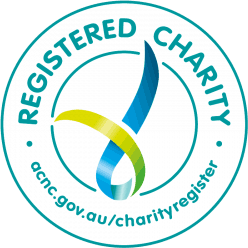It is widely researched that early intervention can and does have significant impacts on a child’s ability to overcome challenges and learn new skills early on in their life. This can lead to:
- increased quality of life for a child
- a sense of belonging
- a sense of being understood
- a reduced need for intense frequency of therapy in the future
- and so much more
Your child’s early intervention journey has begun! You have been recommended to access occupational therapy services. Your first thought might be what is an occupational therapist? What do they do? Why does my child need one? You certainly wouldn’t be the first or the last to have these thoughts! Occupational therapists support children in so many different areas of their development and in so many ways that it often leads to questions.
So, what is it that we as occupational therapists do? The goal of occupational therapy is participation in meaningful activities for the child and supporting them to reach their full potential. In the early intervention space, a few examples of what an occupational therapist can support a child with include:
- Self-care skills (toileting, dressing, brushing teeth)
- Self-management (sensory regulation, emotional regulation)
- Fine and gross motor skills (sitting, throwing a ball, arts and craft)
- Social functioning (play, making friends)
- Cognitive functioning (problem solving, attention)
This year, occupational therapy week is being celebrated from 23rd-29th October with the theme being Unity Through Community. As a profession we are united through our community, our passion for what we do and the role we play in supporting children to engage with and participate in their own community in a meaningful way for them and their families.
Children learn best through experiences that they perceive to be fun and interesting to them. It is at the core of what we strive to achieve for the children that we support through the Stronger Together Foundation and of course, we have fun doing it!
We asked our amazing OT’s to share some of their favourite activities they use in sessions. Here’s what they had to say:
- “People games; I love to scan the environment. See if I can find ‘clues’ as to what might interest the child (e.g. what toys/pictures/books do I see? What are they focusing on). And find a way to follow their interests. I think it’s a lovely way to share connection”
- “Playdough – so many activities you can do with it! Make food, animals, favourite things, emotions, hide toys inside, playdough action song, drive trucks through it, the process of making playdough, deep pressure regulation, every fine motor skill ever (coordination, in hand manipulation, hand strength, pincer grasp, crossing midline, finger isolation)”
- “Animal walks – such a wide range of skills! Core strengthening, deep pressure & movement sensory regulation, you slow it down or make it go faster, imagination, motor planning, coordination, crossing midline, imitation, joint attention”
- “Music – When all else fails, this is great for dance/freeze games/talking about favourite movies/revving up/cooling down/brown noise for calming/meditation”
Of course, any OT will tell you that the most successful connection with children happens when they are experiencing optimal emotional and sensory regulation.
Our OT’s shared some of their tips on how to best support emotional and sensory regulation at home and in the community:
- Capacity building of the child’s team, advocate for others to better understand that this is not a ‘problem’ that the child has to fix, but rather, an issue with our environment, that needs to be more inclusive
- Visuals – all day, every day! Communication devices, visual schedules, first-then visuals, and language to support a child’s understanding of expectations
- Deep breathing – bubbles, pinwheels, balloons, rainbow breathing, animal breathing, flower breaths, balloon breaths, tummy breathing
- Co-regulation –use a calm voice, acknowledge their feelings, be present, give them space and time to process their own emotions
- Offering choices (e.g. “we have to have breakfast now, would you rather eat out of your blue or green bowl?”)
- Sensory equipment such as noise cancelling earmuffs, a calm corner or fidget toys
- Sensory play – including but not limited to rice, kinetic sand, chickpeas, water
- Movement based activities to support regulation (running, chasing, tickles, peek a boo, music/dancing)
There is so much possibility in what children can learn and achieve. Nurturing children and their families is at the core of what we do.
“There is no greater investment in our nations future than enabling our children to reach their full potential” (Reimagine, 2023).
Written by Sophie Clarke
Lead Occupational Therapist



